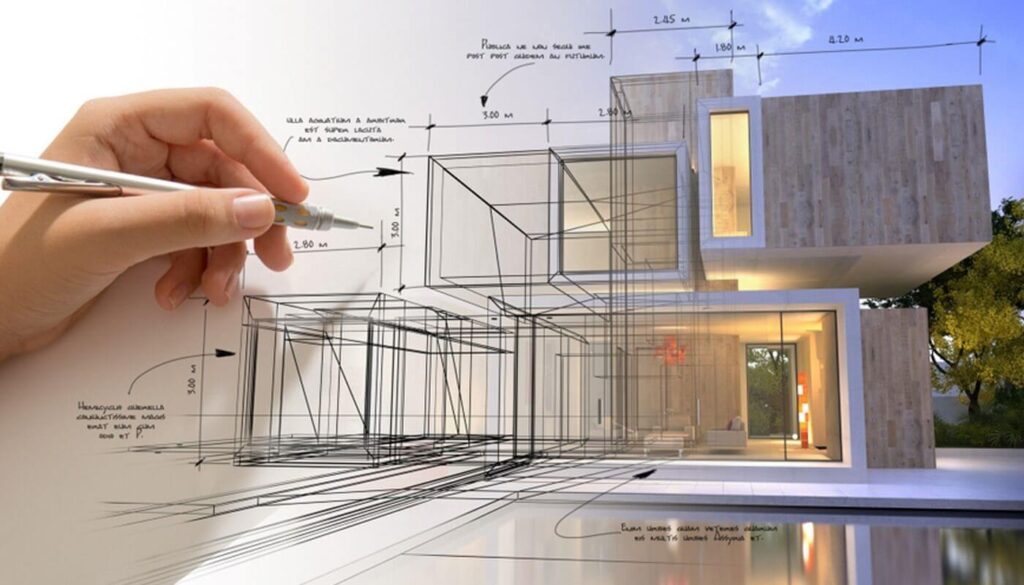Transforming Spaces: The Vision of CDA Architects for Modern Living
Transforming Spaces: The Vision of CDA Architects for Modern Living
Blog Article
The Crucial Function of an Architect in Shaping Lasting Urban Settings for Future Generations
The function of an architect in crafting sustainable city settings is progressively critical in responding to the obstacles of environment change and urbanization. By perfectly incorporating eco-friendly principles into their layouts, designers not only boost the aesthetic and functional top quality of metropolitan spaces yet likewise address pressing problems such as energy performance and social equity.
Comprehending Sustainable Urban Style
Sustainable city style incorporates environmental principles with city planning to develop atmospheres that are not just habitable yet likewise resilient. This method emphasizes the value of incorporating all-natural systems into the metropolitan textile, guaranteeing that growth meets the demands of today without compromising the ability of future generations to satisfy their very own needs. Crucial element of lasting metropolitan layout include efficient land usage, the promotion of biodiversity, and the integration of environment-friendly areas, every one of which contribute to improved high quality of life for homeowners.
Additionally, lasting city design focuses on the decrease of the urban heat island impact, boosted air quality, and efficient stormwater monitoring. It encourages making use of sustainable sources and energy-efficient structure practices, which substantially reduced carbon footprints. Sustainable urban design promotes social equity by producing easily accessible public rooms and advertising mixed-use growths that provide to varied populaces.
Via thoughtful preparation and cutting-edge design strategies, sustainable urban environments can enhance community resilience against climate change while fostering financial growth. This all natural strategy not just addresses prompt city challenges however likewise prepares for healthier, a lot more lasting cities for generations ahead.
Secret Obligations of Engineers
Engineers play a crucial function in forming sustainable urban environments by translating layout concepts into tangible frameworks and rooms. Their obligations include a vast array of tasks that contribute to the overall success of city layout jobs.
Most importantly, architects perform complete site analyses to recognize the environmental, social, and social context of their jobs. This foundational expertise notifies their design choices, making sure that buildings integrate with their surroundings. They additionally take part in collaborative procedures with stakeholders, including city coordinators, engineers, and the area, fostering a comprehensive method to urban advancement.
Additionally, designers are tasked with producing designs that enhance power effectiveness, source conservation, and capability. They must abide by neighborhood zoning legislations, constructing codes, and sustainability accreditations, making certain compliance while pressing the boundaries of development.
In addition, architects are liable for managing the style procedure, collaborating with various experts throughout the building phase to make sure that the vision is realized precisely (cda architects). Inevitably, their duty is not entirely concerning looks; it has to do with producing resilient, flexible spaces that improve the lifestyle for current and future generations, laying the groundwork for lasting city living
Cutting-edge Materials and Techniques

In addition, advancements in modern technology have actually resulted in the development of high-performance products, such as insulated concrete kinds (ICFs) and solar glass, which add to power conservation and harness renewable resource. Techniques such as easy solar design and environment-friendly roofings further exhibit how style can balance with all-natural systems, minimizing reliance on man-made heating & cooling.
Moreover, the assimilation of wise products, which adapt to ecological changes, uses promising methods for enhancing structure efficiency. These products see can reply to temperature level changes or dampness levels, maximizing comfort and sustainability.
Eventually, the strategic choice and application of cutting-edge materials and methods encourage architects to produce city spaces that are not only useful and aesthetically pleasing however additionally resilient and ecologically liable, guaranteeing a lasting future for generations ahead. cda architects.
Community Interaction and Cooperation
The success of cutting-edge products and methods in sustainable urban architecture is significantly boosted by energetic neighborhood engagement and collaboration. Architects have to identify that the developed environment profoundly influences the lives of regional citizens, making it crucial to include them in the design procedure. Engaging anchor the community cultivates a sense of possession and liability, guaranteeing that developments not only meet visual and practical needs however also show the values and desires of those that inhabit them.

Effective area involvement also helps in prioritizing social equity within urban development. By thinking about the voices of marginalized populations, designers can produce areas that are inclusive and fair. By doing this, community engagement and collaboration become essential to achieving really sustainable urban environments that offer the demands of existing and future generations.
Future Fads in Lasting Design
An emerging focus on adaptive reuse and round economic situation concepts is readied to redefine the landscape of lasting design. As cities come to grips with enhancing population densities and ecological obstacles, engineers are progressively turning to techniques that enhance existing structures rather than seeking new builds. This approach not just maintains cultural heritage but additionally significantly reduces source usage and waste.
In addition, improvements in innovation are shaping future trends in lasting style. The assimilation of smart products and structure systems permits real-time power monitoring, improving effectiveness and minimizing carbon footprints. Innovations such as environment-friendly roof coverings, living wall surfaces, and energy-generating facades are becoming standard practices, additionally promoting environmental balance within metropolitan atmospheres.
Moreover, a shift towards biophilic style is gaining grip, stressing the link between nature and human wellness. By incorporating natural environments, engineers produce rooms that foster mental wellness while promoting biodiversity.
Verdict
In conclusion, designers are critical beforehand lasting urban atmospheres via their expertise in style, cutting-edge products, and community engagement. By prioritizing power performance and resource conservation, these experts add to the creation of resilient metropolitan areas that fulfill the needs of present and future generations. The combination of eco-friendly concepts not just enhances livability but likewise promotes social equity, making certain developments resonate with the values and goals of the neighborhoods they offer.
Report this page